We record a good amount of video at each live Foundations in Manual Therapy: Voice and Swallowing Disorders class, including myself, training the clinicians who act as teaching assistants. When I mention the apparent asymmetry of her anterior transverse processes, notice the variation in the SCM landscape. Is asymmetry a problem, the “cause,” or is… Continue Reading
The Thinking Practitioner Podcast Interview, with Whitney Lowe
The Thinking Practitioner Podcast Interview, with Whitney Lowe I was honored to be a guest on The Thinking Practitioner Podcast with Whitney Lowe. Whitney and I met many years ago when we were both presenting at a conference in Winnipeg, Canada, and I’ve followed his work since then. Our talk centered around one of my… Continue Reading
Palpation: An Art of Not Knowing
Palpation: An Art of Not Knowing Learning palpation, to feel what we need to feel in order to intervene, is a source of frustration for newcomers to the manual therapy field. As I teach my Foundations in Manual Therapy: Voice and Swallowing Disorders course to SLP and others, many of who’ve yet to be exposed… Continue Reading
Treatment by Walt Fritz, PT
Receive expert intervention from the person who teaches others Walt Fritz, PT, has been in private practice for over two decades and has been educating health professionals through person-centered manual therapy intervention since 2007. More recently, he has taught this work to speech-language pathologists and voice professionals to aid them in their interventions with patients… Continue Reading
Manual therapy safety in the head and neck: A person-centered guide
Manual therapy safety in the head and neck: A person-centered guide The December 2022 issue of the Massage New Zealand publication contained a feature article I was asked to write. The topic of safety when working in the head and neck field can take many forms, including strict medical concerns. I wrote a broader article… Continue Reading
Manual Therapy vs. Touch-Based Cueing. Can touch be non-denominational?
Might touch-based cueing be more similar to manual therapy/massage touch than many believe?
Thirty-seven years of a physical therapy career has taught me much but left me confused about just as much. I’ve learned the value of movement, be it presented as strengthening for the remediation of problems or a more generic movement for those same outcomes. I’ve seen the importance of balance, though now I shy away from seeing the solving of issues being dependent on achieving perfect balance. And I’ve seen touch help move people through their dysfunctions, though I no longer worship one form of touch as I once did. Continue Reading
Building self-determination in our patients
Building self-determination in our patients “What I find so hard to understand is how I continue to improve without seeing you regularly!”These words, paraphrased based on my memory, were recently said to me by a patient. I frustrate new patients when they ask me how frequently they should be seen, and I reply with a… Continue Reading
Wedge Revival
Wedge Revival Recognize these? Various professions use pelvic wedges to “balance the pelvis” or other more nefarious (manipulative) usages. In my early training, I was presented with a decidedly biomechanical model of causation and intervention. If the body is misaligned, this was seen as the cause of problems, along with restricted fascia and emotional stuck-ness… Continue Reading
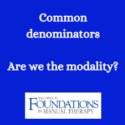
Are we the modality? A common denominator
Are we the modality? A common denominator The longer I exist in the world of manual therapy, the more I see little difference between styles of work or modalities. Despite claims of unique access to single tissues or pathologies, all manual therapy is performed in remarkably similar ways. What are the underlying qualities of each… Continue Reading

Putting patient preferences and values back in EBP
Putting patient preferences and values back in EBP Evidence-based practice (EBP) has been the accepted norm in medicine and rehabilitation for nearly 30 years, though exploration began of its concepts in the early 1970s (Zimerman, 2013). EBP consists of three elements: the best available evidence, the clinician’s knowledge, and skills, and the patient’s wants and… Continue Reading
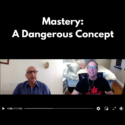
Mastery: A Dangerous Concept
Mastery: A Dangerous Concept Recently Scott Dartnall, RMT, and I sat down for a talk on the concept of mastery in manual therapies. Keeping humble not only benefits our reputation but also keeps us from avoiding errors. With a higher call for adherence to evidence-based practice (EBP) models of care, clinicians are often caught between… Continue Reading
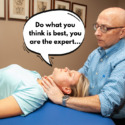
Flipping the Script
Flipping the Script: Shared Decision-Making Hi new patient, I’m the expert. I a physical therapist (no DPT, sorry) with 35 years of experience. Those years include a ton of continuing education and independent research. They include tens of thousands of patient-contact hours. I’ve been an educator in the continuing education field since 1995. With all… Continue Reading
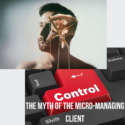
The myth of the micro-managing client
The myth of the micro-managing client We’ve all had clients or patients who seem to want to script or control the session, telling us what to do, how long to do it, and always asking for different levels of pressure—telling us how to do our job. What to do about this person?? How about listening… Continue Reading

Complexity; simplified
Complexity; simplified Causation in manual therapy scenarios is often discussed as tissue (or pathology) specific issues. But causation is complex, and in this podcast, I joined Rani Lill Anjum, Ph.D. in philosophy at the Norwegian University of Life Sciences. Rani has authored several books, including Rethinking Causality, Complexity, and Evidence for the Unique Patient, which… Continue Reading
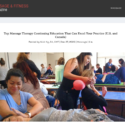
Top Massage Therapy Continuing Education Listing
Top Massage Therapy Continuing Education Listing I’m honored to be included on Massage & Fitness Magazine’s list of top massage therapy continuing educators. You can read the list at this link. Cheers, Walt Fritz, PT Foundations in Manual Therapy Seminars and The Pain Relief Center www.waltfritz.com Please consider checking out my online course offerings, ,… Continue Reading

Podcasts and Articles
Walt Fritz, PT’s Podcasts, Videos, and Articles Over the past few years, I have been fortunate enough to participate in several podcasts and interviews that are now available for listening. They range from voice- and swallowing-specific to more general interviews that address various aspects of the manual therapy work I teach. Strongly represented are principles… Continue Reading

